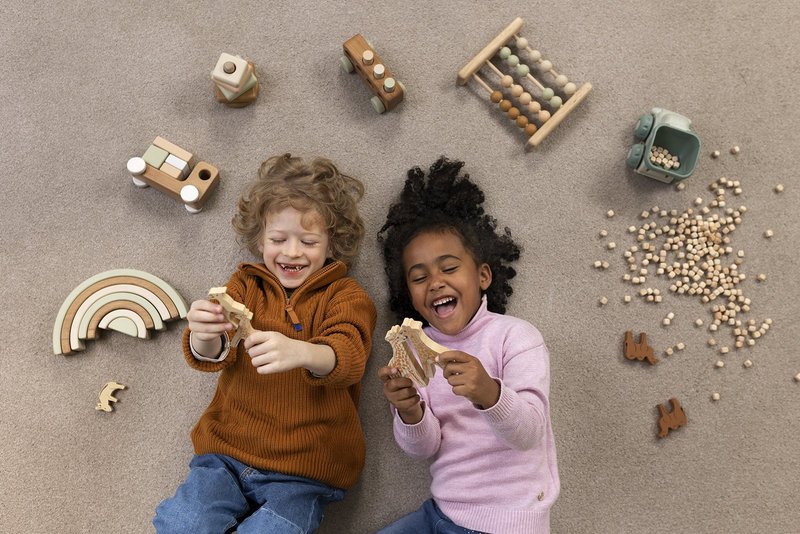
The growing Kidult opportunity
A commentary by Steve Reece
By Steve Reece
Previous generations of adults would not generally as a group have considered Toys as an appropriate purchase or gift to receive. The exception was if it was a specific Hobby such as Model Railways, or Puzzles, which have always been popular for certain adults. There have always been a limited number of devoted collectors of Dolls or Action Figures, but these groups were small historically speaking.
Today the most obvious toy industry move aside from sustainability is to embrace the Kidult space. When I joined the Toy industry around 25 years ago, the talk in the Toy business was of ‘Kids Growing Older Younger’, abbreviated as KGOY. Today it feels like we are on the verge of a new era in the Toy trade – the era of ‘Adults Growing Older Later’ or AGOL!
Kidult products: The origin story

For the start point of the Kidult trend we need to look at several different areas. Firstly, we should go right back to the 1970s. My generation was the Star Wars generation, this iconic movie franchise in effect created mass market movie merchandising, especially for Toys. This age segment who experienced the original Star Wars trilogy first time around – now in their late 40’s and 50’s – has taken their love of that franchise through into adulthood, and still to this day the world of Star Wars resonates strongly with those adults who experienced Star Wars as children.
The second area we should look at is the massive growth in superheroes within mainstream popular culture. Iconic superhero characters such as Batman and Spiderman were originally comic book characters with long running comic publishing iterations. Superman arguably started the big switch of these superhuman characters from the pages of comic books to the movie screens, but Batman and Spiderman have been hugely successful brands at the box office. The effect of this (and the growth of Marvel’s cinematic universe) is to move these previously niche but cult characters off the pages of comic books and into mainstream pop culture.
Finally, the other major development which has facilitated the growth of the Kidult opportunity is the revolutionary change in retail and media facilitated by mass adoption of the internet. E-commerce sites like Amazon allow for vastly greater numbers of individual products to be available to buy versus bricks and mortar retail. It broadens potential product offerings considerably, while social media allows for easy coming together in the digital space of fan and enthusiast groups – this makes targeted marketing really powerful and responsive. These two changes have allowed Toy companies to develop much broader ranges of products, which drives up the overall size of this category and leads to more hit products coming from leftfield directions.
Demographic challenges: Filling the gap left by fewer children
Looking at the outlook for the Toy industry over the next decade, one of the major looming challenges is a dropping birth rate in many major Toy markets. According to the European Union, the average birth rate in the EU in 2020 was 1.50, versus the replacement rate of 2.1. In order then to maintain market value or grow with fewer children going forward, we need to sell either more Toys per child, increase average purchase price per Toy sold or a combination of both. That would be a serious problem if it weren’t for the significant growth in the Kidult space. Today, Toys sold to or for teenagers and adults account for as much as one quarter of the market in some countries. That’s a massive share based on how focused our industry is overall on children and their parents. Here's the challenge then – we need to sell more Toys to or for adults going forward. However, their needs, wants, media consumption and retail shopping behaviours may be quite different to those we are so used to when selling Toys for children. So, Toy companies need to be ready to adapt their approach and to be flexible as they pivot to enjoy new opportunities.
A new consumer requires a new approach

Companies who primarily work currently in categories which could only really be child targeted (e.g. Preschool) will need to stretch their focus and business approach further than those working in more adjacent categories such as action figures. But even where the product type is similar, the Toy itself could well be very different. Whereas Toys for kids are bought based on price criteria, the Kidult market is less driven by price and more driven by the level of aspiration and desire for a particular product. These products are not so driven by the usual downward price pressure or price elasticity pressures of major retailers, and more driven by how much the consumer wants the product. Adults have direct access to their own funds, whereas children are typically reliant on the generosity of their parents or grandparents.
So, we have here a new business within our existing business which has totally different price perspectives and expectations of specification and functionality. From a personal perspective, I myself have four people in my social group (outside of the Toy business) who have one or more Kidult toy products which cost hundreds of Euros. Admittedly my social circle is relatively affluent, but nevertheless my experience is not untypical of what is happening now on a broader scale. This is no longer a tiny niche for unusual people. This is a big niche for many people, but with a large spread of product and brand affinities.
When we look at our marketing model for this area, we also need to be ready to rethink how we operate. Advertising a € 200 Kidult product on children’s TV or on child targeted social media accounts and platforms is not likely to be effective. We need bespoke marketing plans to reach adult enthusiasts. But we also need a different model for deciding which Toys to develop and bring to market, because we may sell lower volumes at higher prices. Moreover, we need to be sure that the strength of demand and aspiration will be there to drive the purchase.
Of course, not all Kidult toys are expensive and super high spec. But even those products which are at normal Toy price points need to consider the different needs of an adult when it comes to our kind of Toys. We need to look at the purchase motivations of the adult and their likely usage of the Toy. For example, many products will be bought for display or collection purposes, in which case, it is more likely that the product will be left in its packaging and displayed. This needs a different focus on display footprint versus functionality for toys for children. Construction Toys for adults can be much more technical and advanced in terms of required dexterity and challenge level due to the greater capabilities of adults versus children.
Long live adults growing older later
In conclusion then, the big focus growth opportunity for the Toy business currently is to evolve from focusing on selling Toys to children and their parents to also selling Toys to adults. The usual way of doing things is not likely to succeed though. Those companies who adapt to the authentic needs of the Kidult segment most authentically should enjoy the most success. Looking forward we are most likely to enjoy an extended period of ‘adults growing older later’ and of developing new products and opportunities.
Adults play and collect. Today more than ever. In the past, they were ridiculed as kidults or nerds. Nowadays, many are proud of this label. Whether they burn for board games, rebuild models, collect comics or love licensed characters For every passion there is something for the fans with purchasing power.
Find out more about Kidults products at the International Toy Fair from 30 Jan - 3 Feb 2024.
To the special area Life's a Playground® - Toys for Kidsters, Kidults & Co.
About the author
Steve Reece has worked in the toy business since the late 1990s. He previously worked for Hasbro, managing iconic brands including Monopoly, Trivial Pursuit & Play-Doh across Europe. He has delivered $hundreds of millions in incremental sales for his employers, clients and partners over time. Steve appeared twice as an Expert Witness on toys & games for the UK Royal Courts of Justice and the courts of Hong Kong. He has extensive experience across toys & games including marketing, consumer insight, sales, licensing, sourcing and more. Today Steve runs Kids Brand Insight, a leading Consultancy helping toy & game companies profitably grow.




